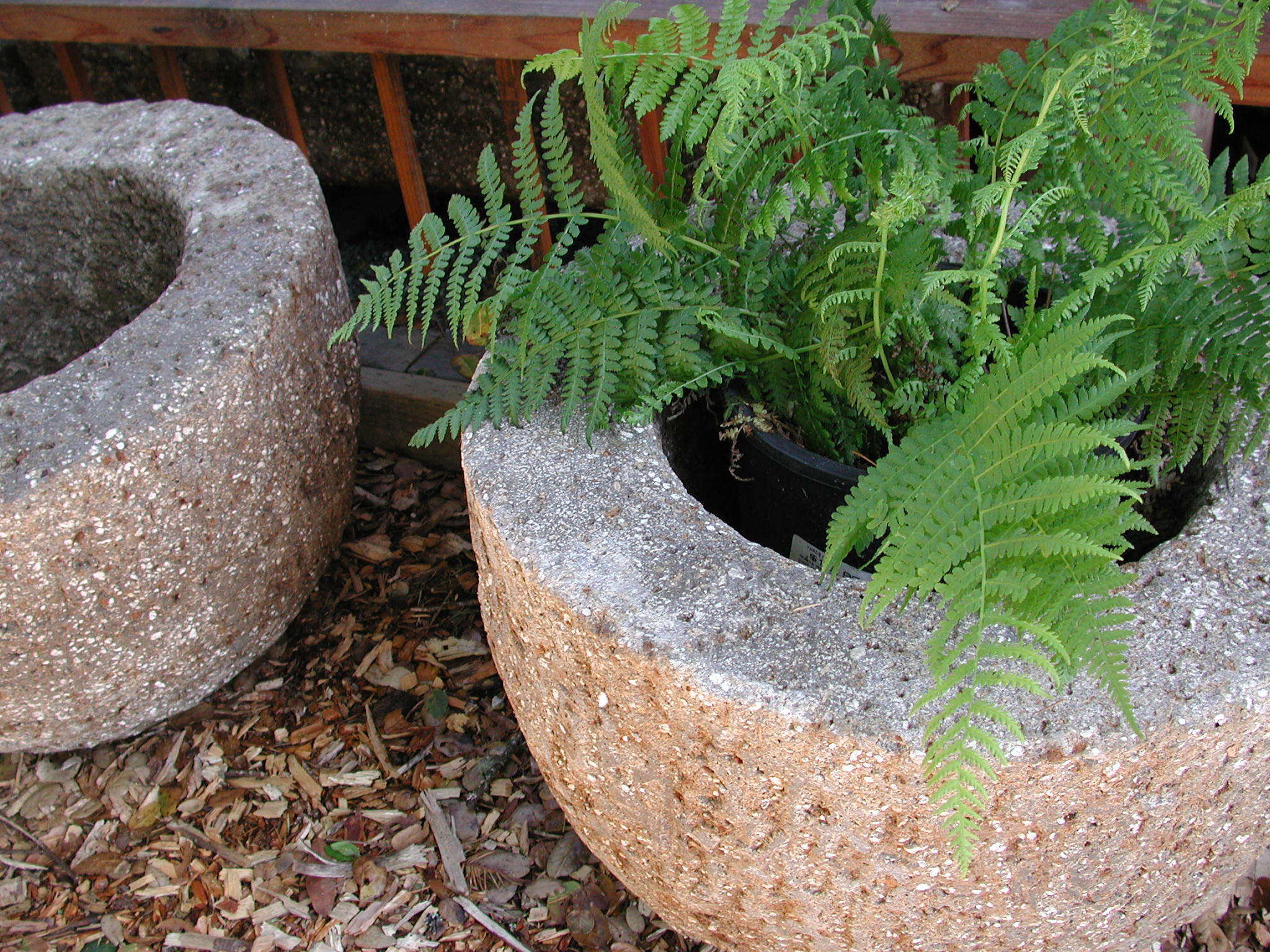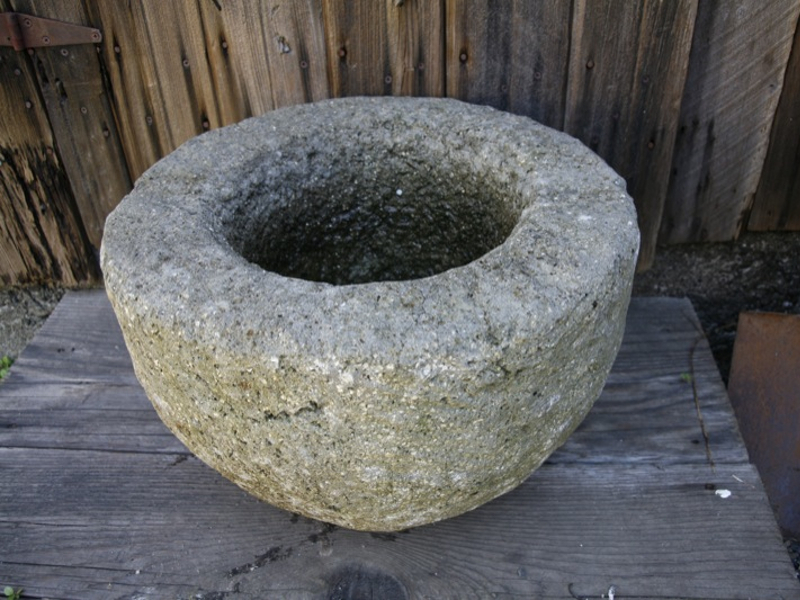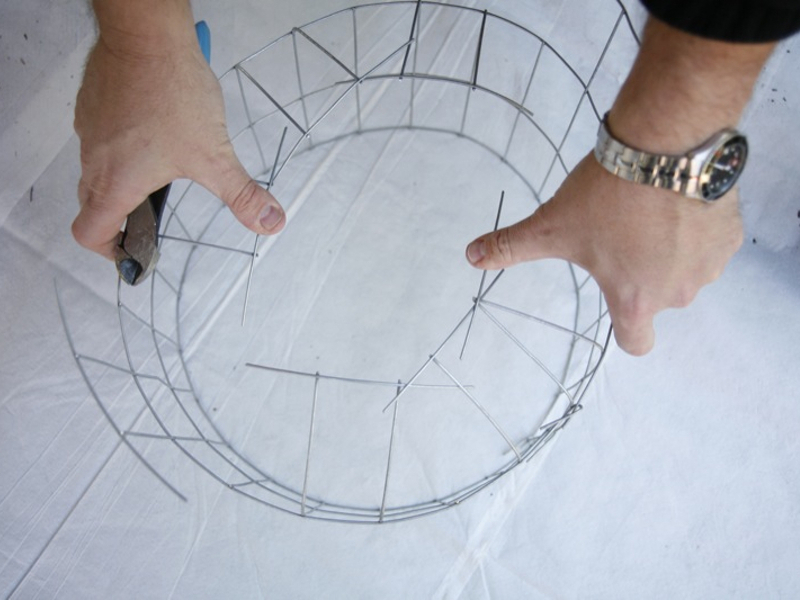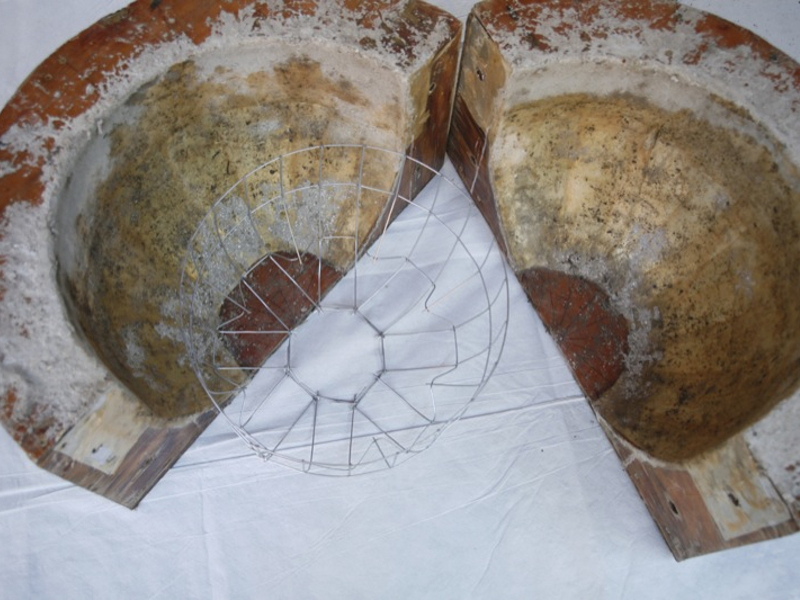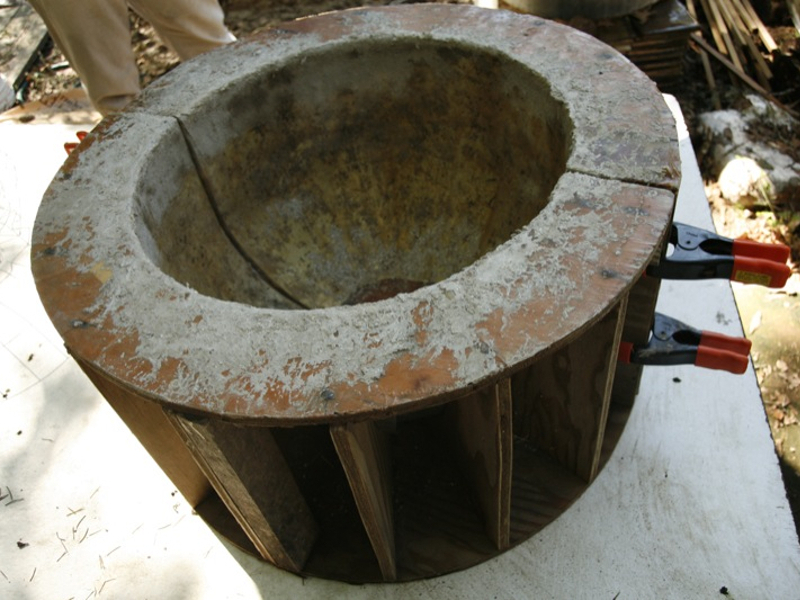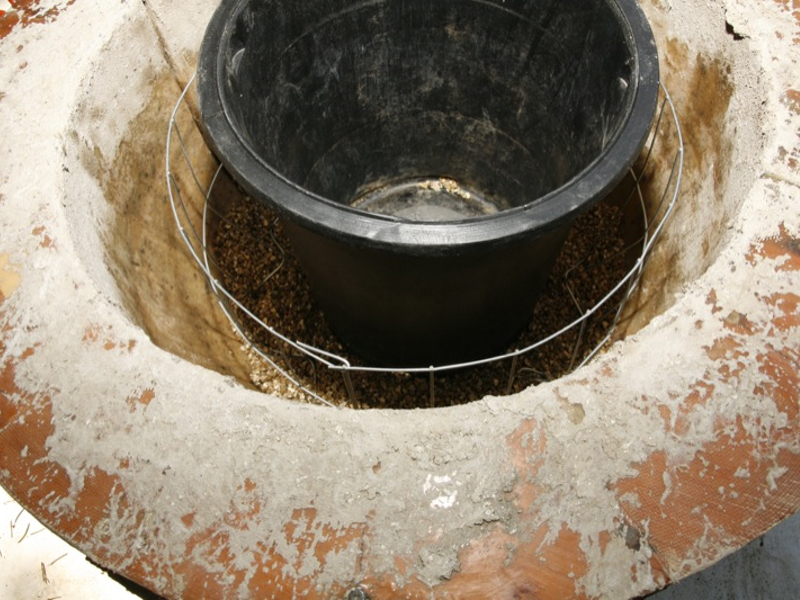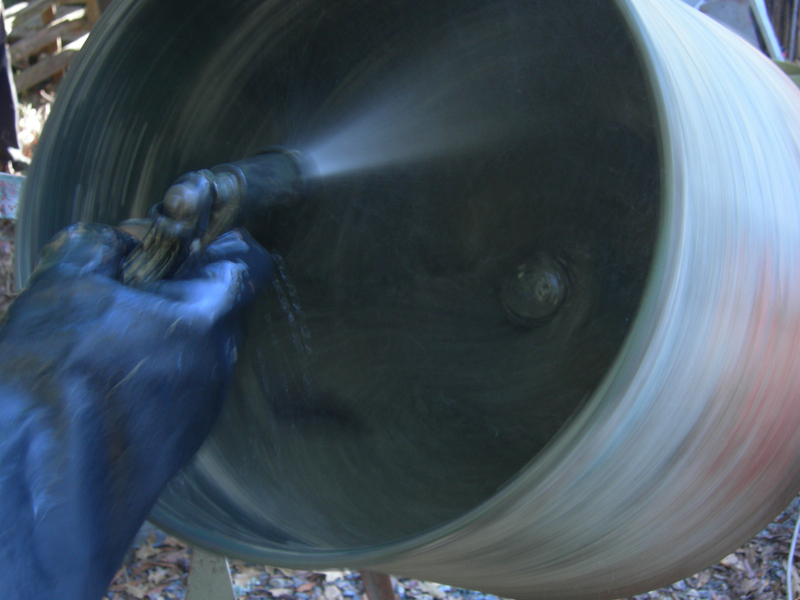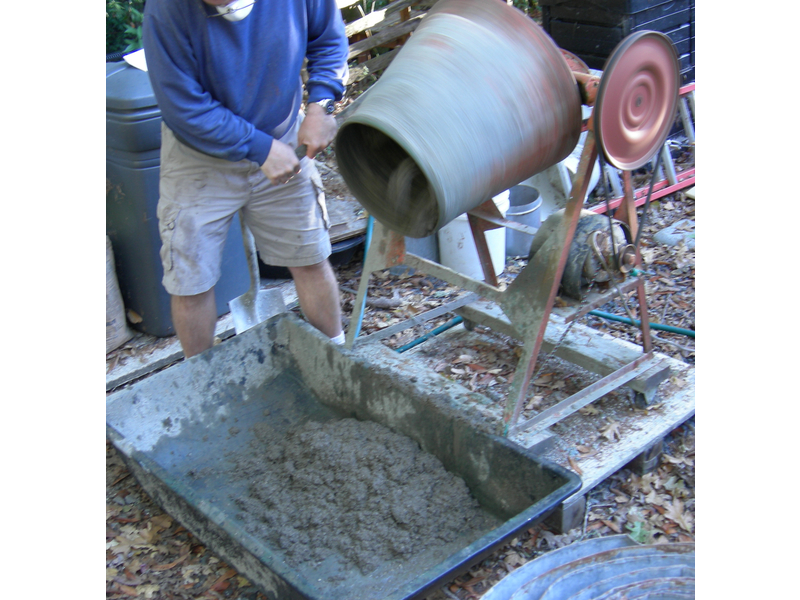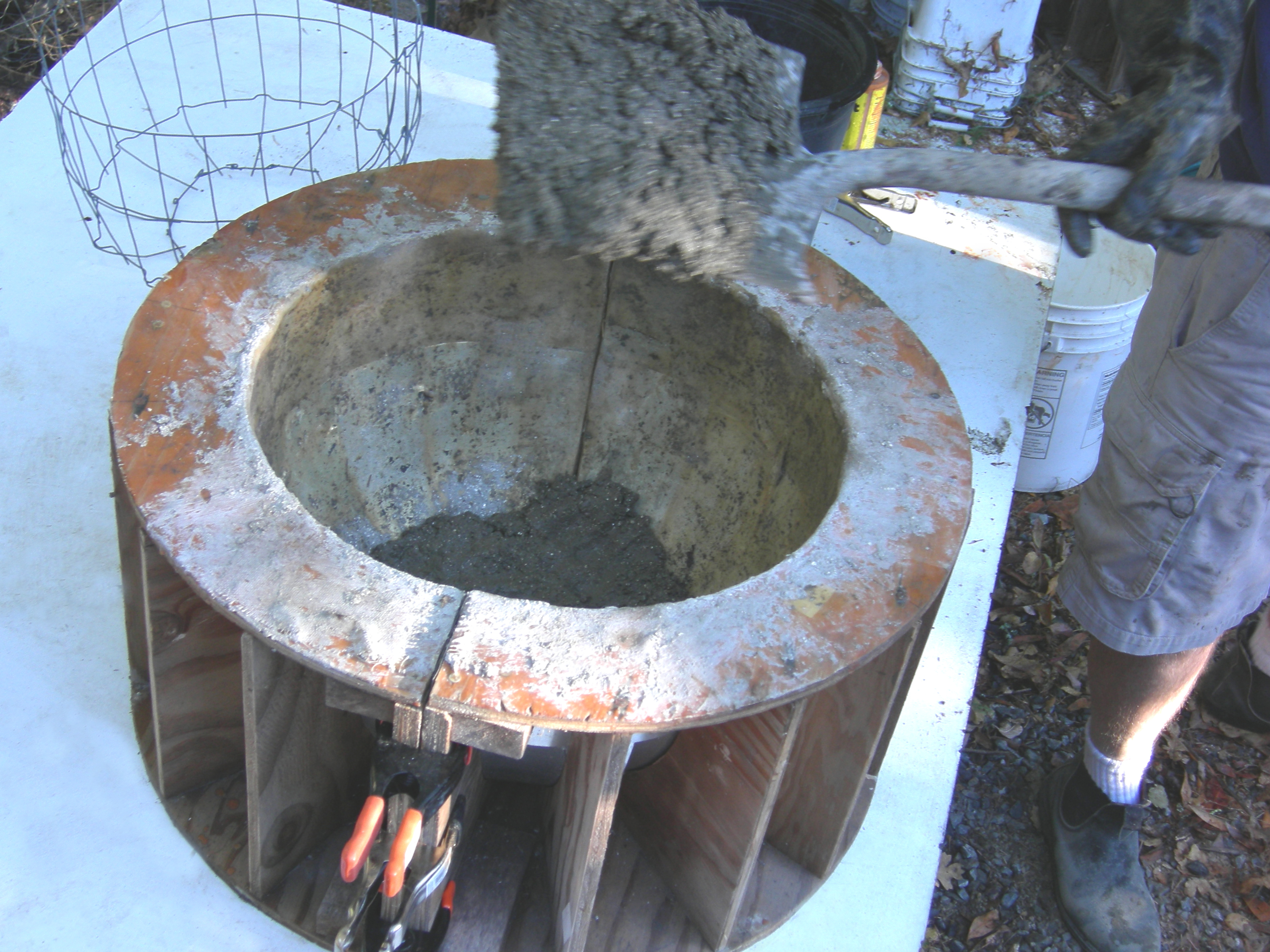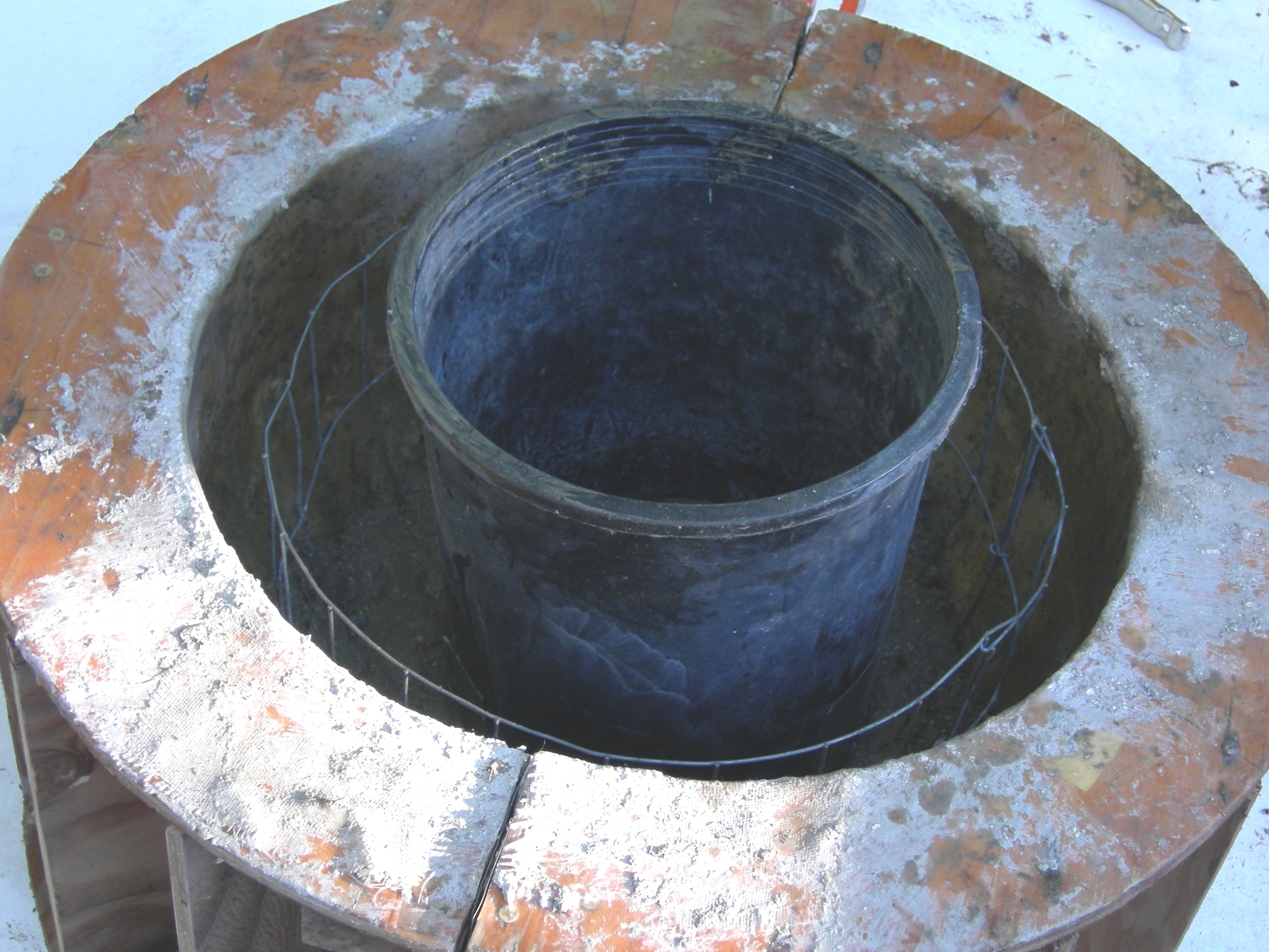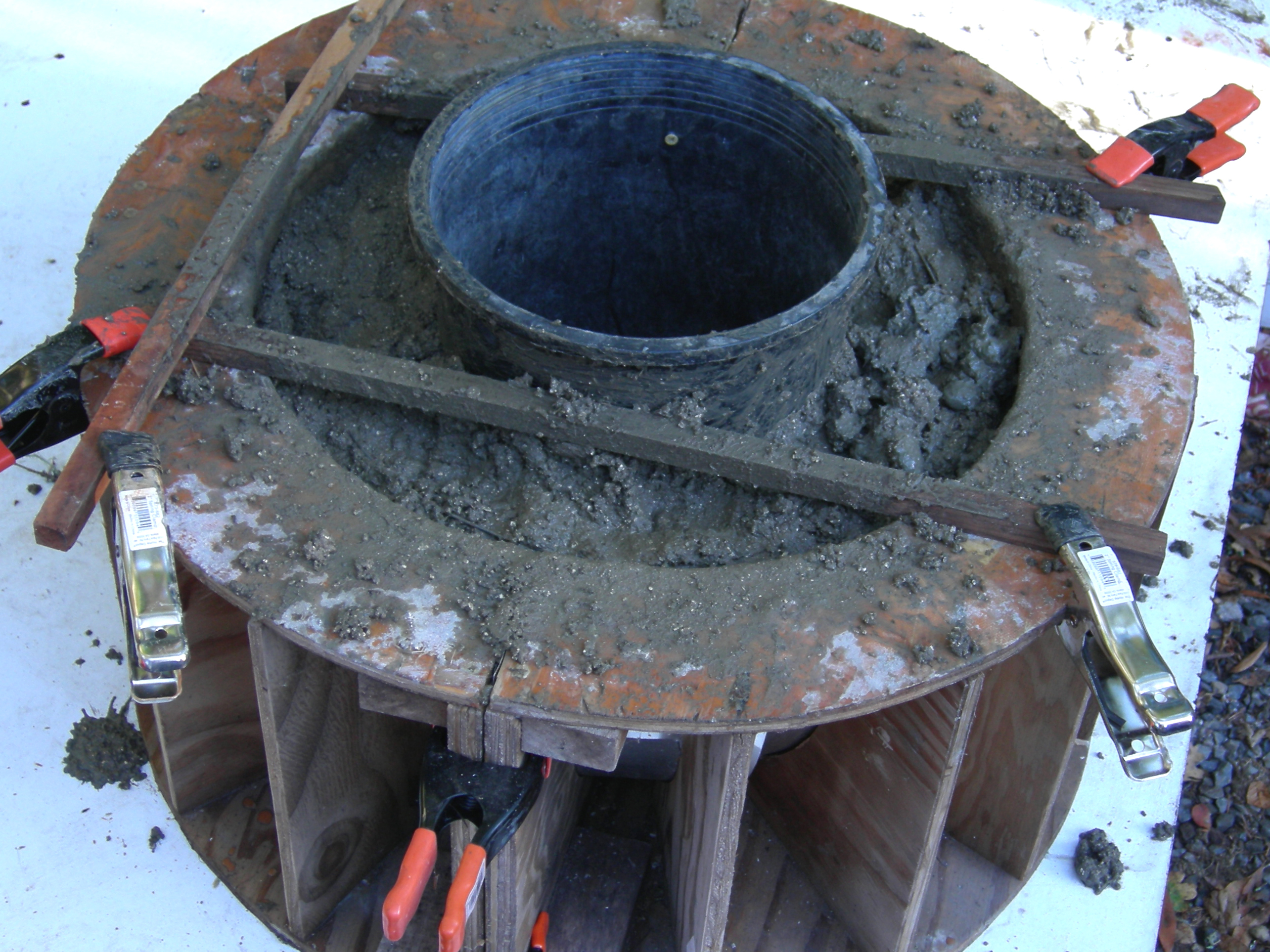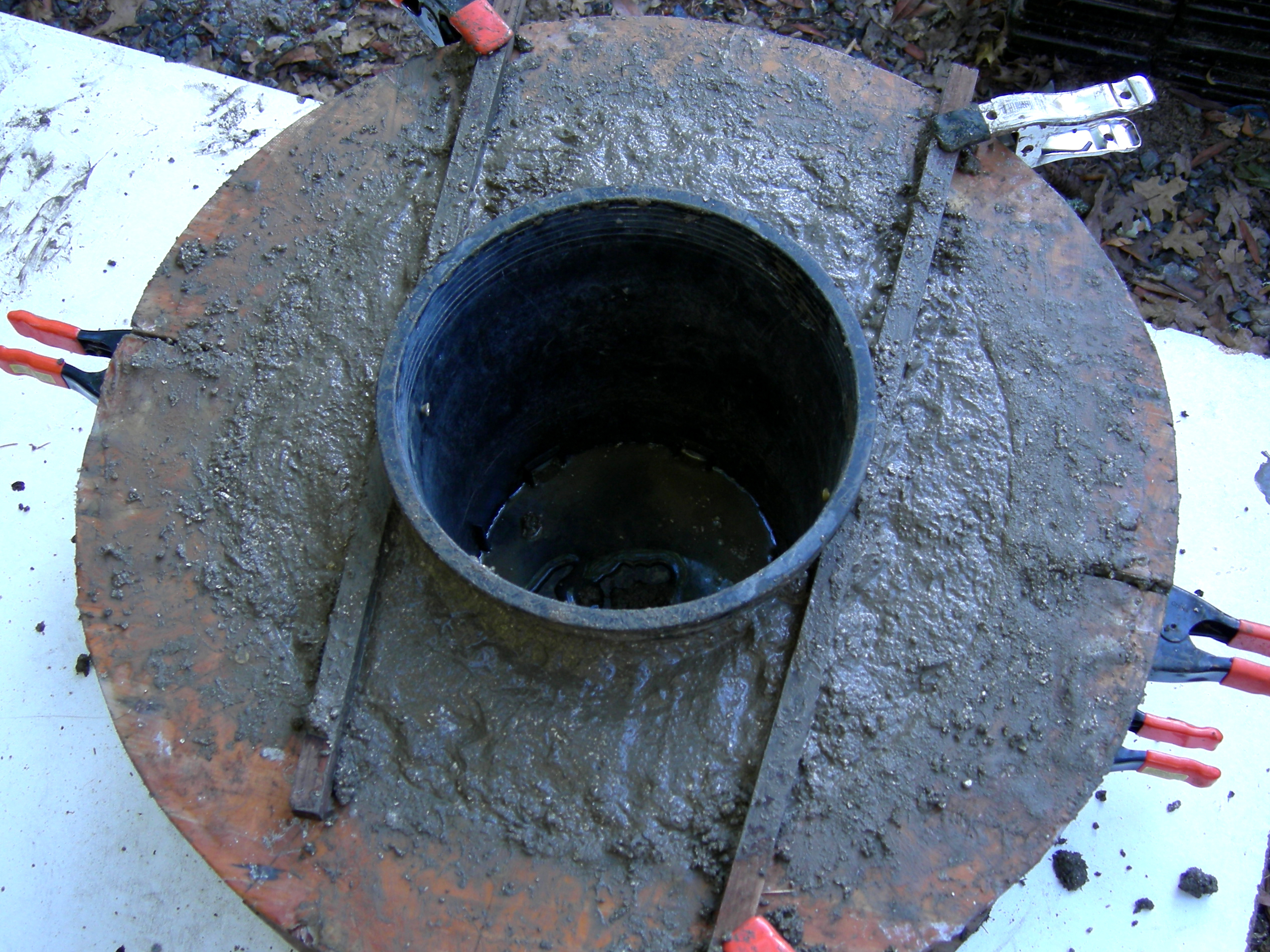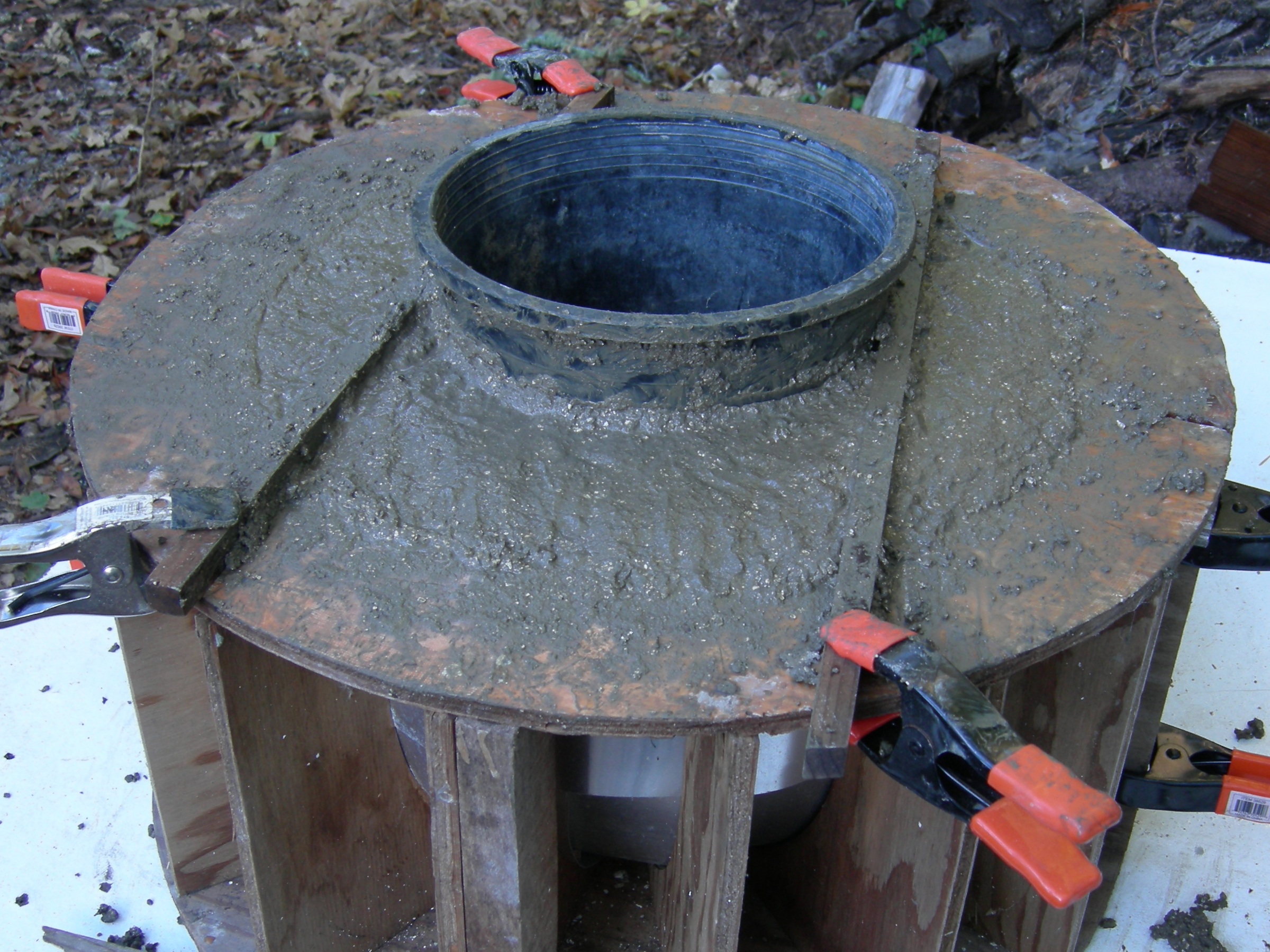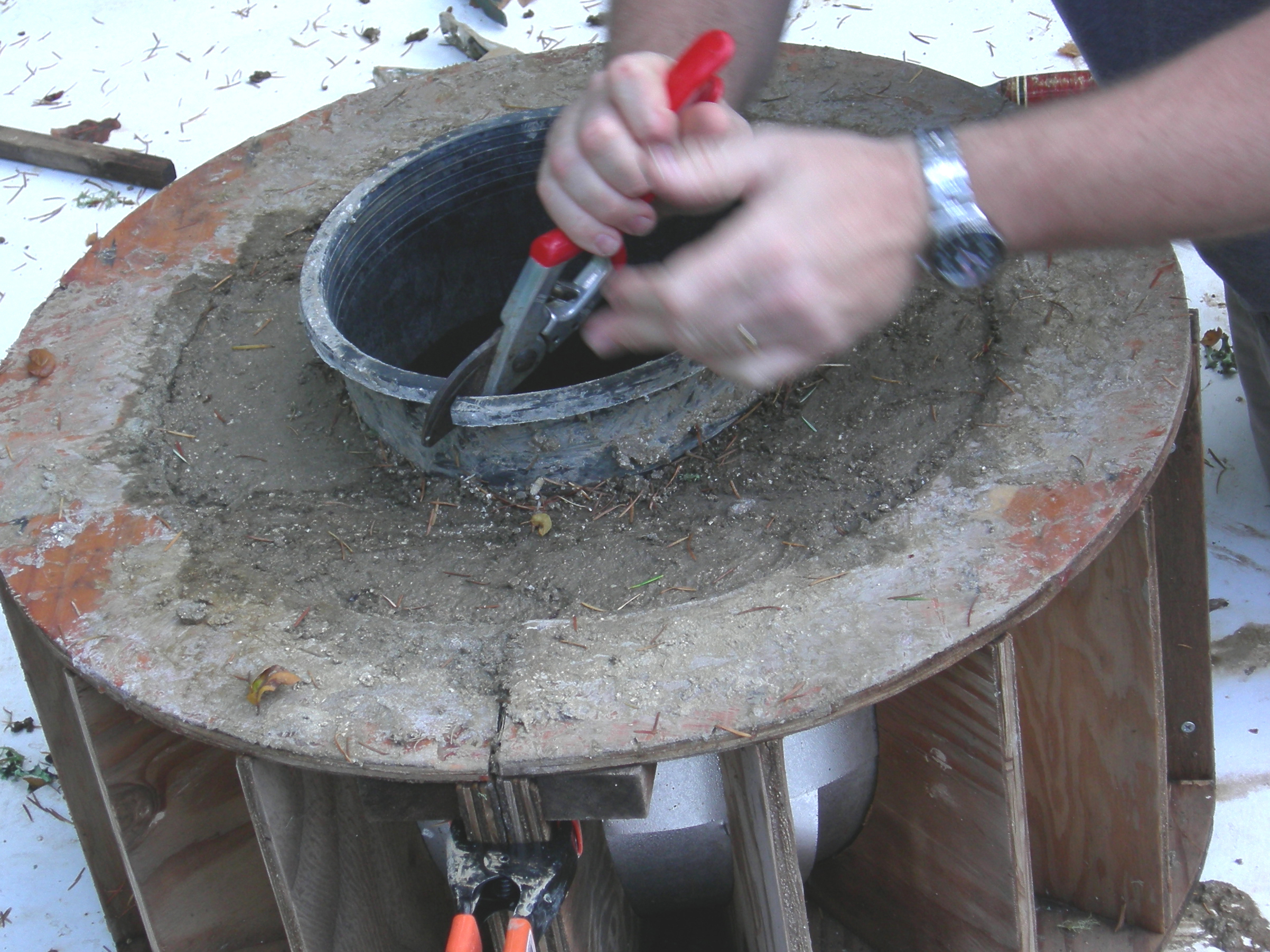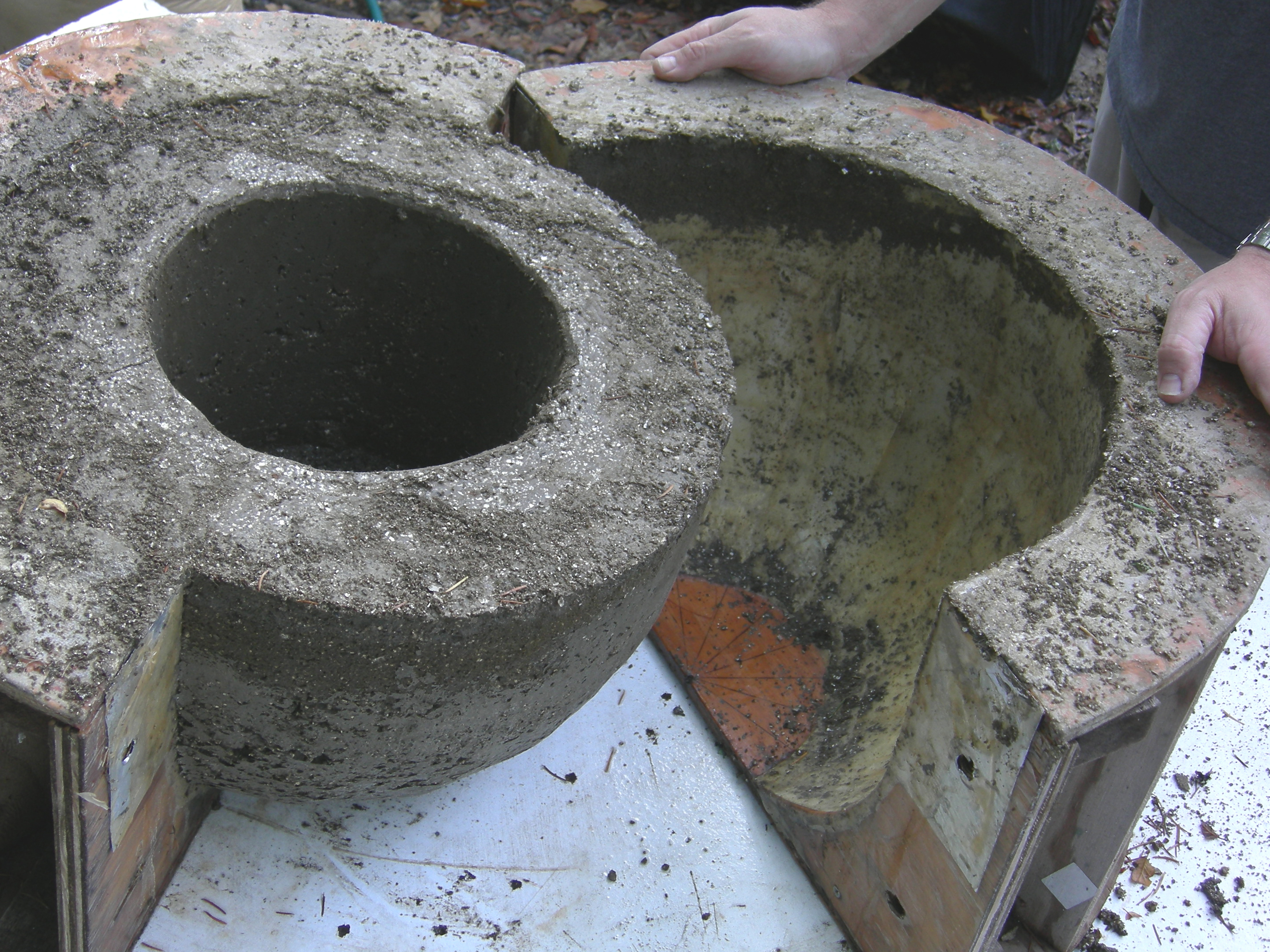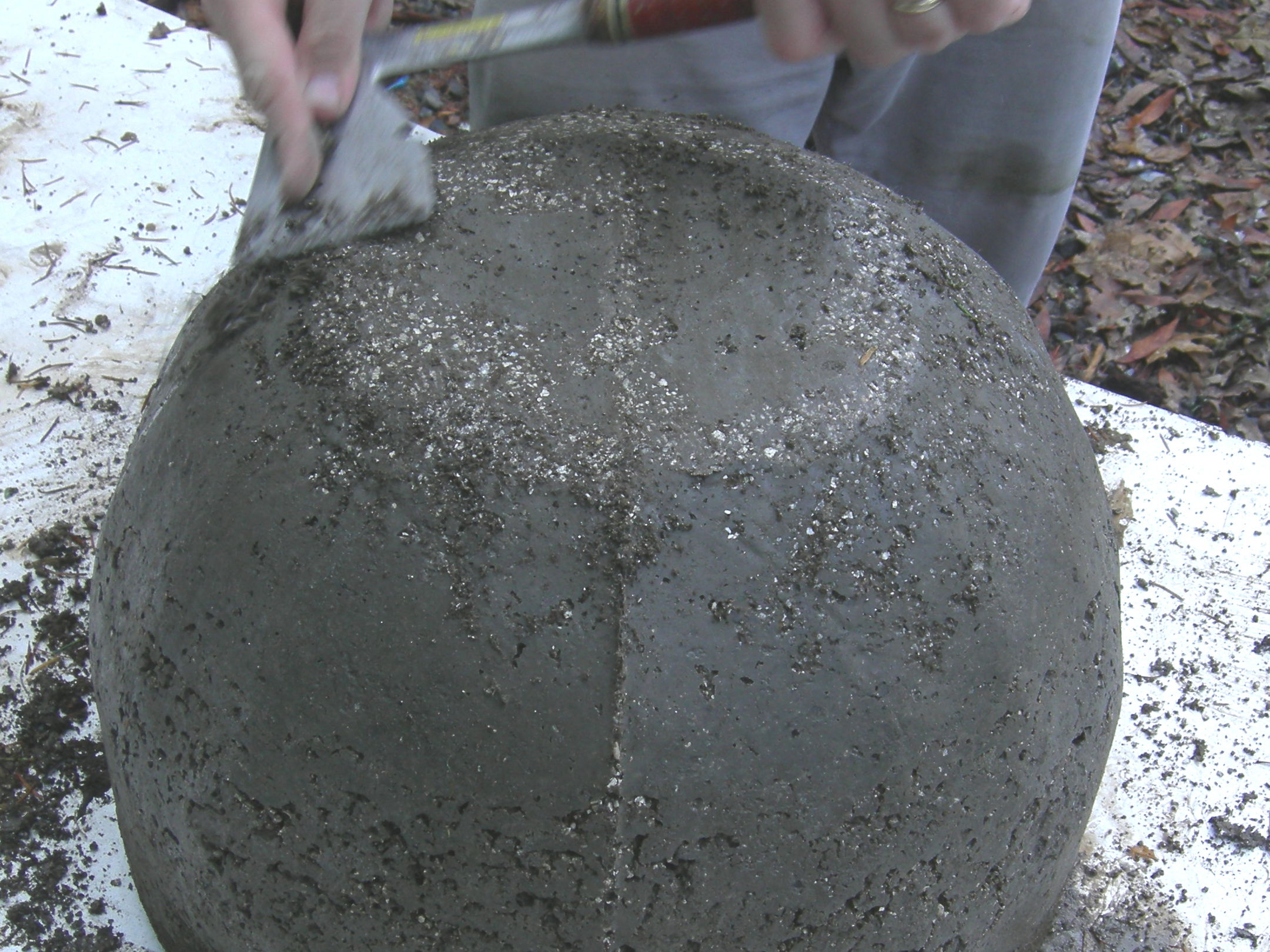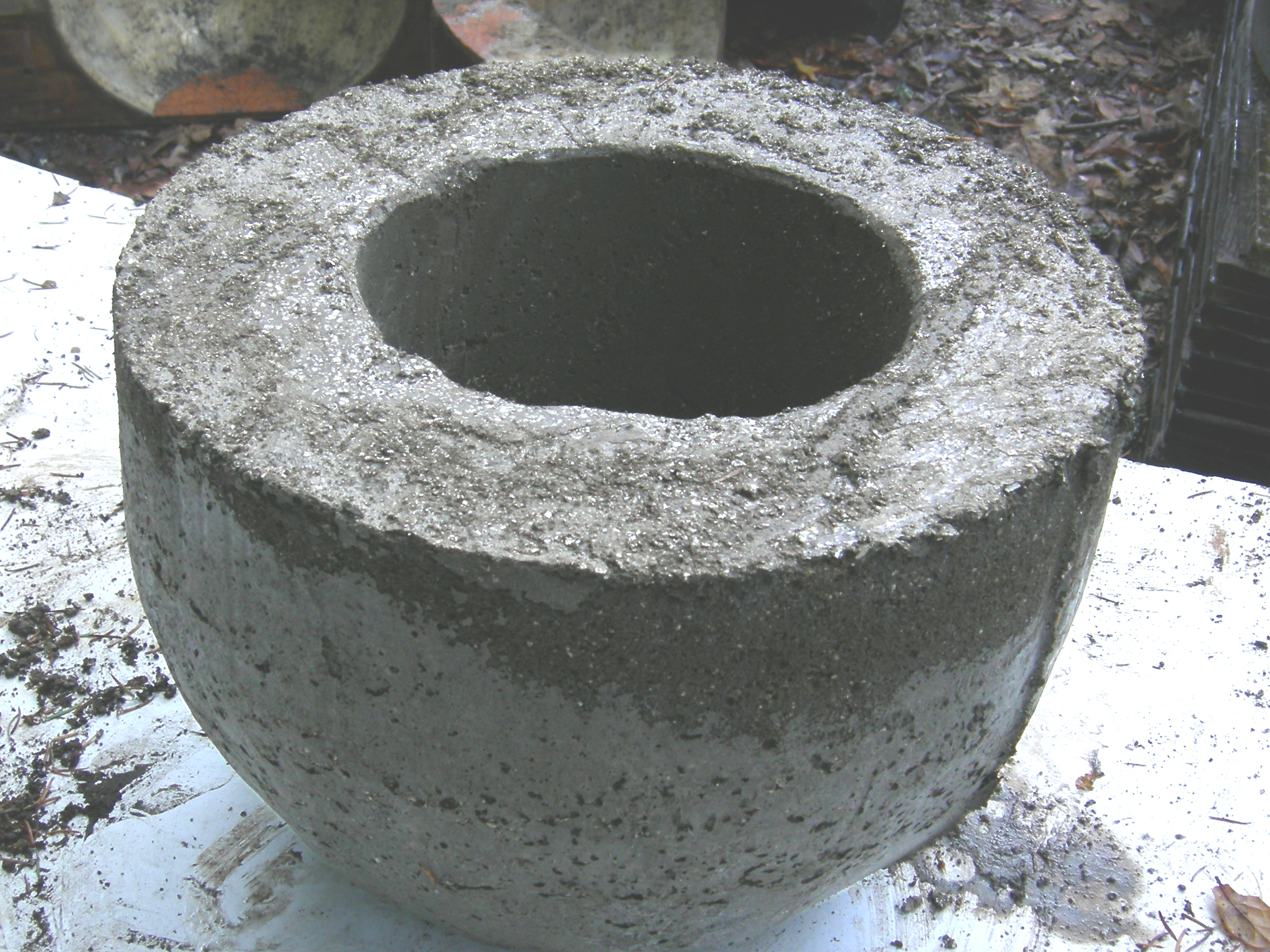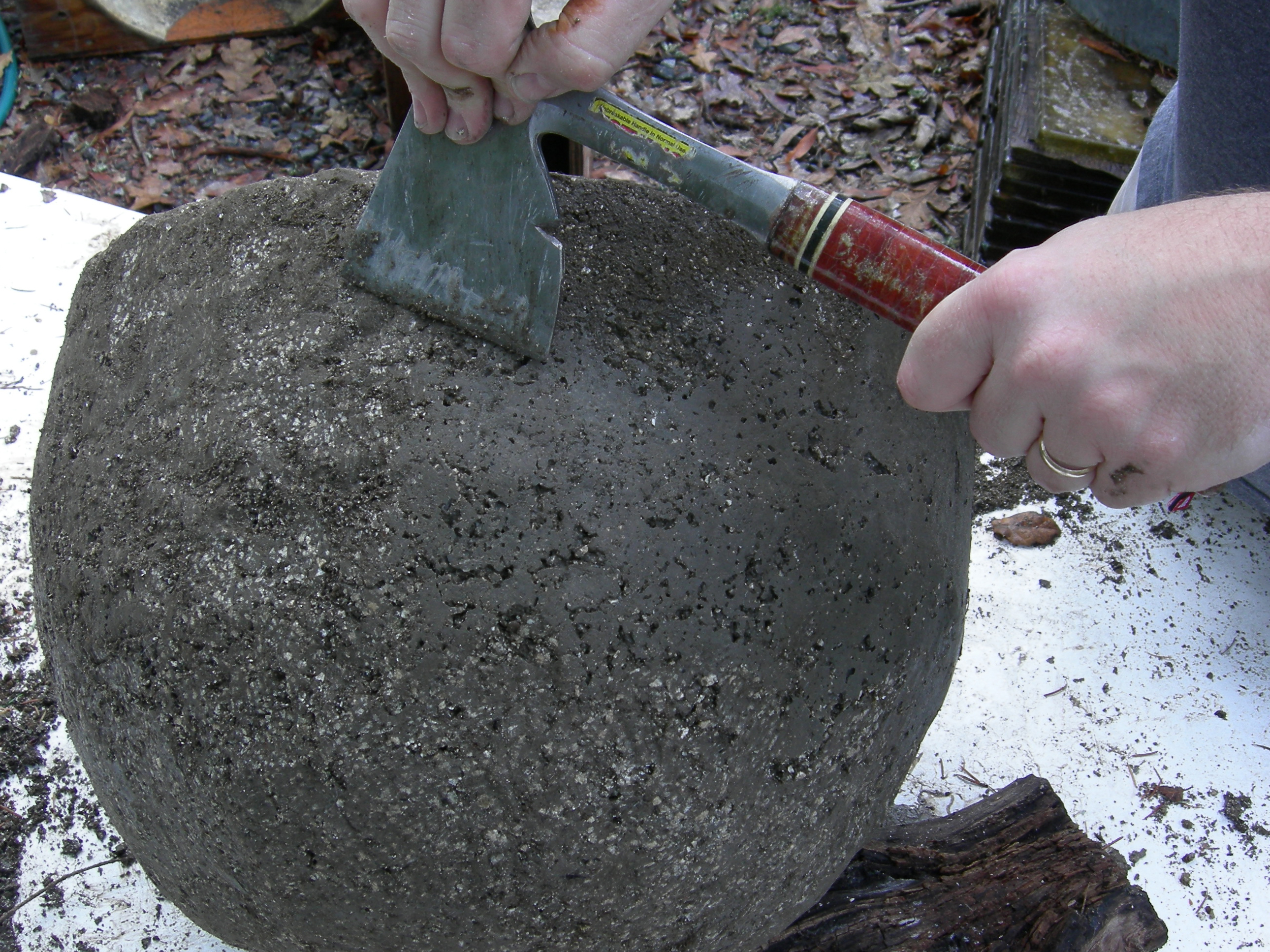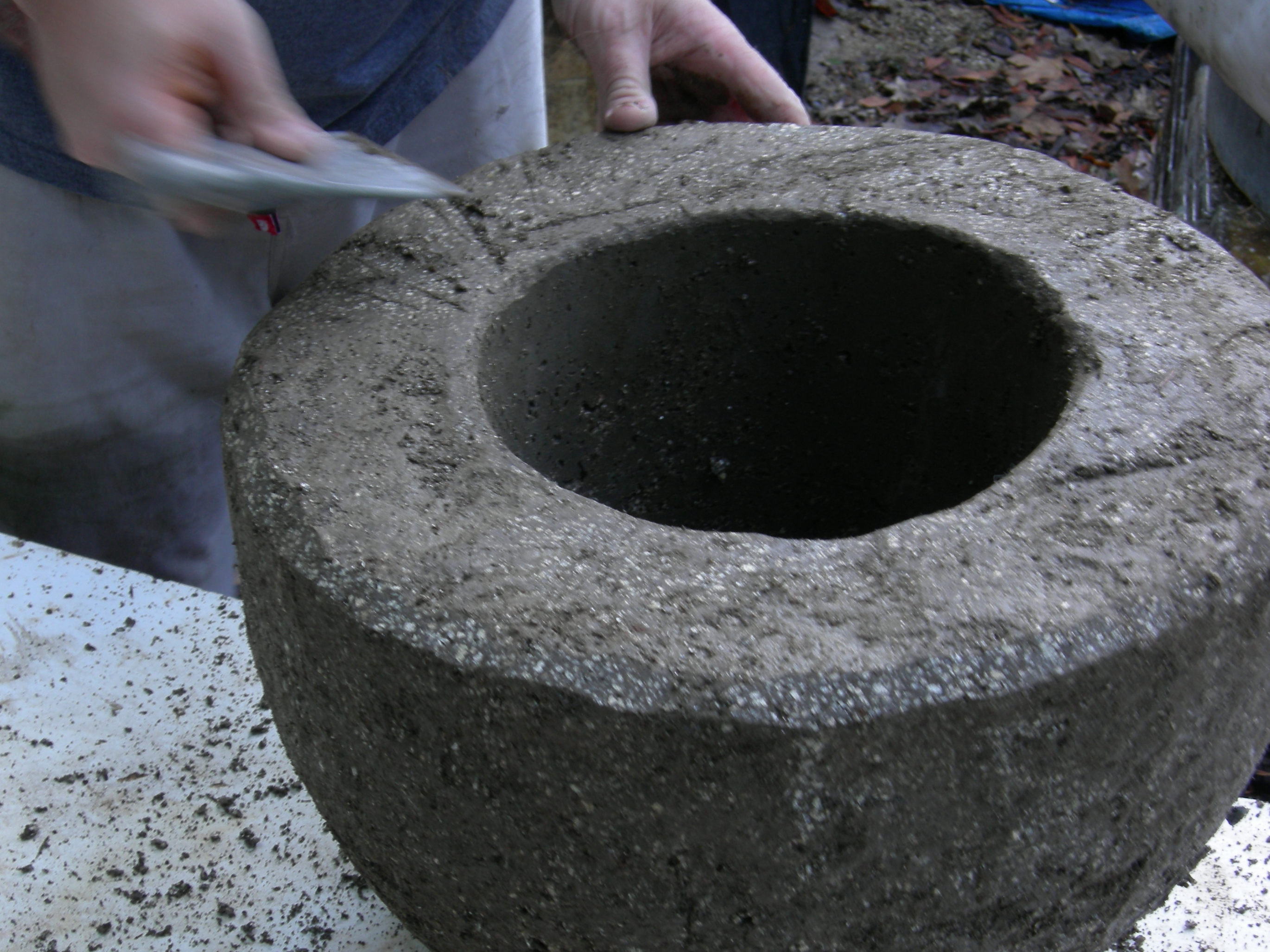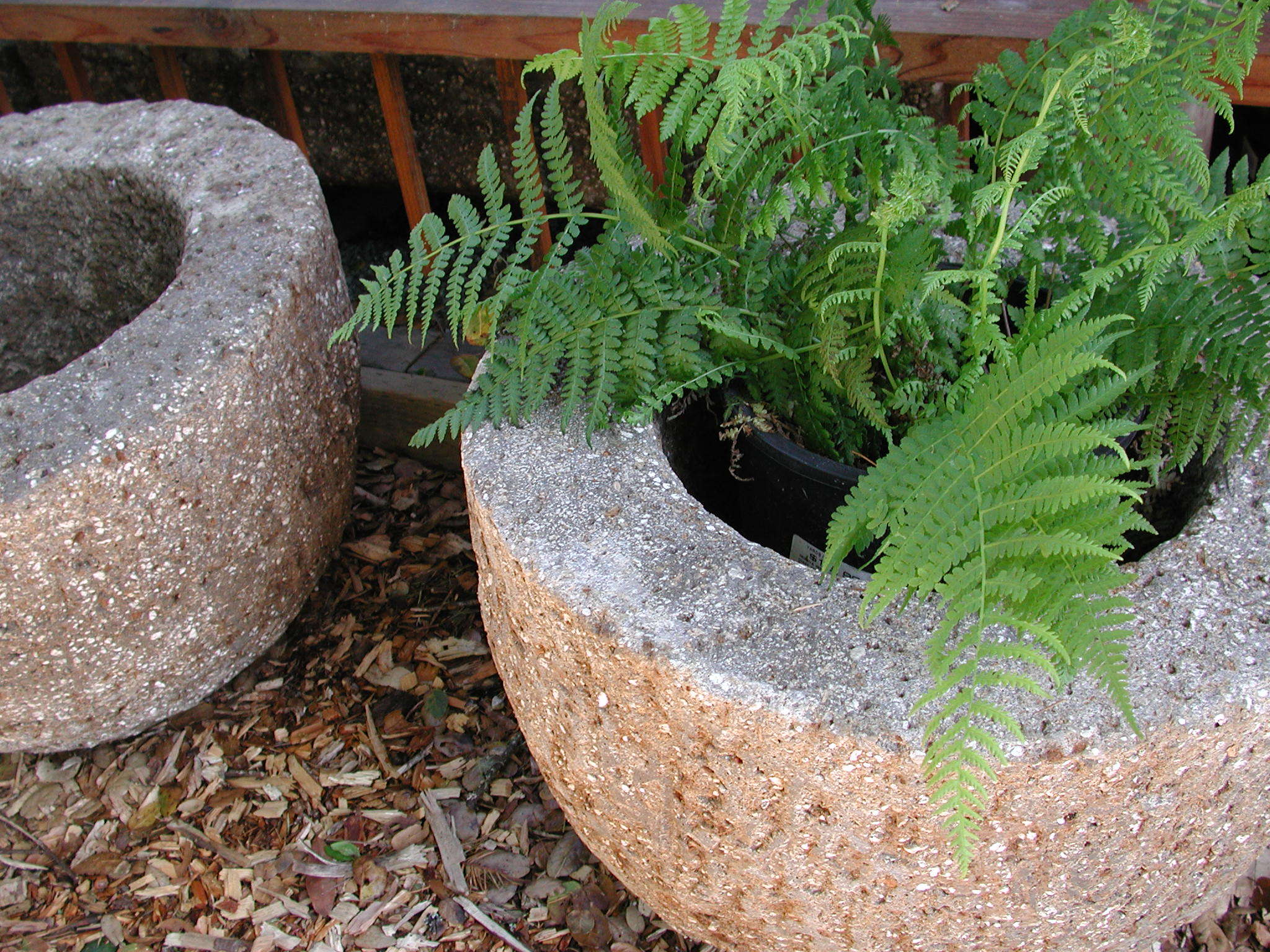The primary ingredient for this project is Portland cement. At the building supplies mega-store, there are a number of bagged cement products to choose from. Do not purchase ready-mixed concrete. This contains gravel, sand, and, by the way, Portland cement. Get pure Portland cement. The bags will usually state the type, for example II-V, of the material. This isn’t really important for this project. Just avoid a fast-setting product.
Note: Portland cement contains some nasty alkaline compounds. Wear your mask, safety glasses, and rubber gloves.
Tip: use a nursery fiber pot for the interior mold. this has two advantages: it will be much easier to remove than the plastic pot; and the rough exterior of the fiber pot creates a perfect texture on the interior of the hypertufa container.
I use a custom made outer mold. It makes life easier, especially when producing more than a few. My first hypertufa containers employed the black plastic nursery pots in the materials list. This is cheap and easy. Hypertufa is easily carved when first pulled from the molds, and you can sculpt your container to any shape you wish. With that said, a really simple and hip mold is a plywood box. You’ll still use the round pot for the center of the piece. This is a traditional Japanese design. Keep the width of the material greater than 3” at all points, and finish the wood with paint or varnish so the hypertufa won’t stick. (For my molds, I coat the interior surfaces with fiberglass mesh and epoxy resin.)
There are a number of additives that will improve the structural integrity of concrete mixtures. I’ve specified two of them: acrylic admixture and reinforcing fibers. Using these will help your container to better withstand weather, especially freeze-thaw cycles.
Hypertufa is messy. Don’t do this project inside your house or garage, on a nice lawn, or even on a deck. Don’t wear your favorite jeans. Don’t dump any hypertufa mixture down a drain; it’ll set up underwater!
You can add concrete dye to the mixture. The natural mixture will cure to a light tan-gray color. The dyes you find at the home supply store offer a limited palette of colors. Tan, charcoal, brown, and terra cotta are typical. Tan, sometimes called buff, produces a nice warm color. Charcoal darkens the material, highlighting the vermiculite particles and resulting in a granite look.


